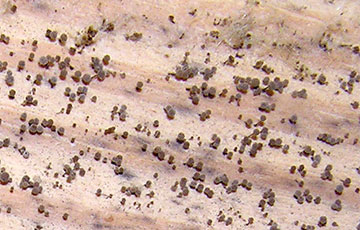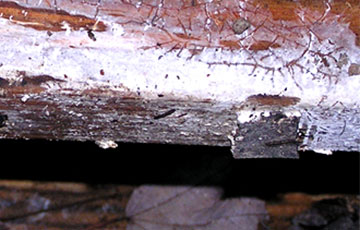
This appendix is intended to give building managers an understanding of the factors that govern relative humidity, and to describe common moisture problems and their solutions. Mold and mildew are fungi that grow on the surface of objects, within pores, and in deteriorated materials. They can cause discoloration and odor problems, deteriorate building materials, and lead to allergic reactions in susceptible individuals, as well as other health problems.
The following conditions are necessary for mold growth to occur on surfaces:
Human comfort constraints limit the use of temperature control. Spores are almost always present in outdoor and indoor air, and almost all commonly used construction materials and furnishings can provide nutrients to support mold growth. Dirt on surfaces provides additional nutrients. Cleaning and disinfecting with nonpolluting cleaners and anti microbial agents provides protection against mold growth. It is virtually impossible to eliminate all nutrients. Moisture control is thus an important strategy for reducing mold growth.
Mold growth does not require the presence of standing water; it can occur when high relative humidity or the hygroscopic properties (the tendency to absorb and retain moisture) of building surfaces allow sufficient moisture to accumulate.
Water enters buildings both as a liquid and as a gas (water vapor). Water, in its liquid form, is introduced intentionally in bathrooms, kitchens, and laundries and accidentally by way of leaks and spills. Some of that water evaporates and joins the water vapor that is exhaled by building occupants as they breathe, or it is introduced by humidifiers. Water vapor also moves in and out of the building as part of the air that is mechanically introduced, or that is infiltrated and exfiltrated through openings in the building shell. A lesser amount of water vapor diffuses into and out of the building through the building materials themselves.
Yes, mold can make you sick. In addition to its being an unpleasant odor and sight, mold can cause harmful effects to human health that might turn to allergic infections and toxic reactions.
The most common Allergic Effects are:
Immune suppressed patients are more likely to develop mold infections. Among those are:

Mold toxins studies suggest that toxins may be the cause of:
We install vapor barriers, foundation vents, crawl space humidistat fans, and dehumidifiers.